

The history of Medical Practitioners in Dunchurch can be traced back to at least 1830 during the reign of King William IV when Dr Thomas Ellis (the brother of William Webb Ellis) began his practice in the village which went on to span 38 years. Little was recorded about him or his successors in the role of "Medical and Vaccination Officer for Dunchurch District" until the arrival of Dr Herbert Powell in 1909. Dr Powell appears to have been a very popular and remarkable stalwart of the village. Apart from running his practice and caring for soldiers wounded in the Great War at Bilton Hall and Fitzjohns, he was a Churchwarden at St Peter's for 18 years, Chairman of the Dunchurch Parish Council for 12 years and the President of Dunchurch Cricket Club and Dunchurch Bowling Club amongst other interests. Just a few years ago one senior lifelong Dunchurch resident fondly recalled his immaculate demeanour and his house calls in a horse drawn trap. It is interesting that Dunchurch traffic problems were already a major issue in the 1920s, as described by Dr Powell in the Rugby Advertiser at the time of his retirement, age 69:
"Since I began practice 47 years ago (1883) the whole of life has undergone a remarkable change. When I began, the motor car was unknown and there were very few bicycles and all our calls were made on horseback. There were no district nurses only the "Old Mother Gamps"* to nurse the villagers. Medicine and surgery have made vast strides, too in the intervening years.1830-1930
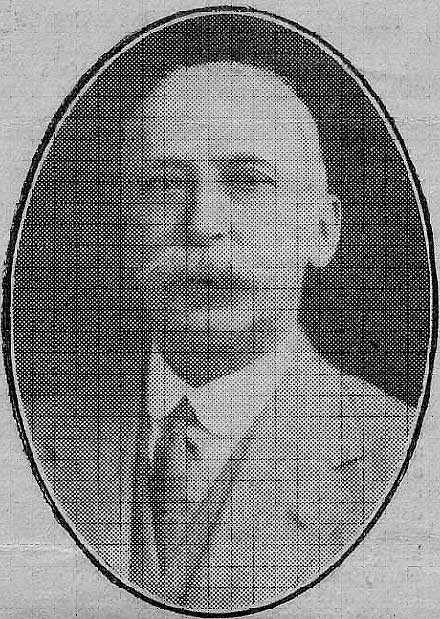
"The most noteworthy change, however, has been brought about by the great increase in the motor traffic. When I first came to Dunchurch (1909), even, this was a very quiet little village. The only accidents we were called upon to treat were the occasional farm labourer who had fallen off a wagon and broken a limb or to a cyclist who had gravel rash. Now there is a constant stream of traffic through the village. Accidents, many of them fatal, occur with appalling frequency and it is nothing unusual for me to be called out two or three nights in a week to a road accident. These accidents have thrown an enormous amount of work on the doctors and I feel that the practice at Dunchurch calls for a younger man.”
On the evening of 19th November 1940, at the height of the Coventry bombing raids, Dr Edmondson stood at the front door watching formations of German planes sweeping towards the blazing city. The sky was bright with parachute flares and puffs of smoke from anti aircraft salvoes. Suddenly he heard the unmistakable whine of a bomb coming down and threw himself flat in the passage. The bomb hit the house and the blast went over his head and demolished two thirds of the building behind. He was rescued from the wreckage but emerged smiling and immediately went to help rescue men buried in the working-men's club opposite his own shattered house. His wife and two year old son, Philip, and a nurse were in a reinforced old stone meat store at the back which resisted the explosion and were also unscathed. His wife recalled that rather than the blast of the bomb, the worst experience was the subsequent sound of crumbling and collapsing masonry all around. The next morning with the house in ruins and the front door hanging half from its frame, a patient raised the knocker and politely enquired at what time the surgery would be held that day! 1930-1940
The morning surgeries were held in a room at his home, Dunsmore House in Dunchurch, which had originally been The Bell, a former Georgian coaching inn on The Green. The venue flourished during the 1930s, but the war changed everything.

Dr EDMONDSON
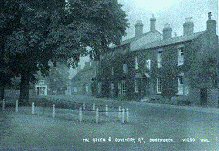
Dunsmore House (3 storey, centre) 1930's
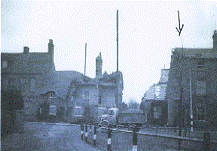
The ruined house after the bomb, 1940
Despite the bombing of his home, there was no respite for Dr Edmondson’s professional responsibilities. Daily surgeries were soon reinstated and for most of the war
years were, perhaps appropriately, held in Howard’s Butchers in Dunchurch, where patients could observe some first-rate surgical scalpel techniques
while waiting to be seen… 1940-1948
After the war a building at the back of the Dun Cow car park became available. This building, at the site of the present day ‘Thatchings’ on Rugby Road, had served as a clubhouse for the Dunchurch Bowling Club (of which Dr Edmonson’s predecessor, Dr Powell, had been the president in the 1920s). During the war it had been reinforced and used as the village bomb-shelter (see photo). When it became redundant, The Dun Cow offered it to Dr Edmondson to use as a surgery.
These were hard times. There were the returning war wounded and veterans to care for, many bereaved families, shortages and rationing and limited medical supplies. Penicillin, discovered in 1928, was not used for patients until 1942. Streptomycin, discovered in 1943, was the first treatment for tuberculosis which was a serious and life-threatening public health problem. Few of today’s medicines existed. At this time, patients still had to pay the doctor for their treatment and for many the decision to call or visit the doctor was based not on the severity of the illness but on whether the family could afford it. When they could not, payment might take the form of a brace of pheasants, a trout or a basket of eggs! Payment for medical care all changed when the Health Minister of the day, Aneurin Bevan, founded the NHS on 5th July 1948. Suddenly, everyone could access healthcare without direct payment. How would this affect General Practice in Dunchurch?
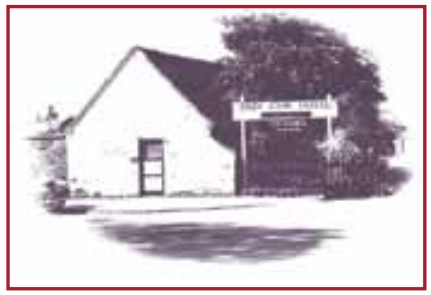
Temporary surgery at the end of the war - late 40's
The foundation of the NHS in 1948 was hugely
significant for General Practice. From a patient perspective there was the
promise of medical care, free of charge at the point of delivery.
Decisions to consult would no longer be limited by cost. Initially all
services were free of charge, though charges for dentures, spectacles and
prescriptions soon crept in. For doctors, there was the potential for a
massive rise in demand (though most patients did not initially overuse the
service). Payment by the NHS removed the need to collect fees (sometimes
awkward) and simplified accounting. Initially the workload was manageable
but by the mid fifties it became apparent that Dunchurch could no longer
be served by a singlehanded GP and Dr Edmondson appointed Dr David
Blundstone (also a former ENT surgeon) as a partner.
At about this time, the previously very
athletic Dr Edmondson (who had represented Yorkshire at tennis and
Edinburgh University at fives and at rugger) began to develop the early
stages of Parkinson’s disease and then became gradually less mobile and
less able to practice. While he and his wife continued to be involved in
the running of the practice and he continued to work despite his illness,
it was clear that the practice once again needed more help and Dr John
Hunter was appointed as an assistant in 1963 and later joined Dr
Blundstone in partnership.
Dr Edmondson died in 1964, a sad loss for the
village and his patients who, held him in high regard as a wise and
intuitive doctor who would offer his time and support, sometimes sitting
for hours with a sick child to alleviate suffering and provide
reassurance. The authorities recognized his great contribution to the
village by naming Edmondson Close after him. His death was also a huge
loss for the local medical profession for whom he was a respected
colleague and clinician as well as a witty and entertaining speaker.
Meanwhile the ongoing changes in General Practice and the 1965 Family
Doctor Charter would bring many changes to the practice.1948-1964
With sincere thanks and acknowledgements to Dr Philip Edmondson.
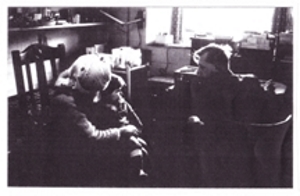
Dr Blundstone consulting 1964

Dr Blundstone in the old surgery 1964
Circa 1968, the new modern surgery to the
left
1980s. From St Peter’s tower. Bomb
shelter is now a tree. The surgery (foreground) has been extended.1950's-1980
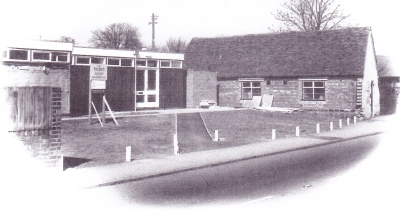
of the old later demolished bomb shelter 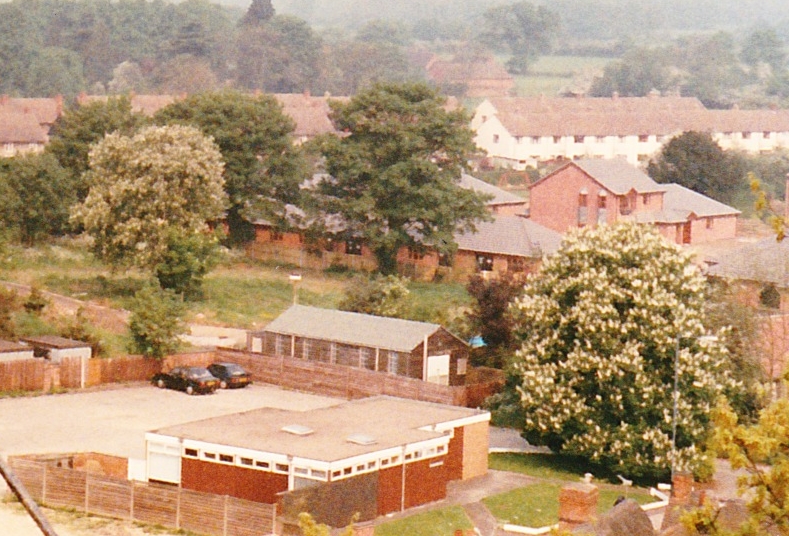
The new free NHS of 1948 inevitably increased demand for healthcare. New treatments were developed and the government struggled to finance ever rising demand (a theme which has challenged politicians ever since). Remuneration for GPS was slow to rise in the 1950‘s and many doctors became disillusioned by spiralling demand and complexity and falling income. Many doctors worked in professional isolation often as single-handed GPs from the front rooms of their homes. Many of these premises were of a poor standard. The service stuttered through the 1950s but by the early 60s morale had fallen, mass GP resignation was threatened and a radical change was required. The Family Doctor Charter of 1966 addressed a number of issues. Instead of only rewarding doctors for numbers on their lists, the NHS began payment for services such as immunization and obstetric care and the quality of these services improved. The Charter encouraged team working and reduced isolation by financially encouraging doctors to build purpose-built medical centres and by subsidising the costs of Practice Nurses and ancillary staff.
The bombing of Dr Edmondson’s home had already moved the Dunchurch practice away from domestic premises but the bowling pavilion/bomb shelter which served as the surgery was small, with just 2 rooms (waiting and consulting) and an Elsan toilet. There were no staff other than the doctors and no telephone. Drs Blundstone and Hunter would see as many patients as attended (no appointment system) and would then drive to Dr and Mrs Edmondson’s home (where there was a telephone) to discuss messages and plan home visits.
In 1967, the Practice opened new premises adjacent to the old building. This was one of the first purpose-built GP surgeries in Warwickshire consisting of a modern prefabricated structure with a waiting room, plumbed toilets, a consulting room for each GP, telephones and space for a nurse and reception staff. Dunchurch Surgery was thus a pioneering practice of the time in preparing for the provision of modern GP care.
I arrived in Dunchurch in 1963 with my wife and baby and was greeted by the
active partner Dr Blundstone who introduced me to Dr and Mrs Edmondson. The
Edmondsons lived at Rose Ash on the Bilton Grange estate which the
headmaster, Rex Machin, had made available to them after their home Dunsmore
House was bombed in 1940. As Dr Edmondson became increasingly crippled by
Parkinson’s Disease the burden of running the practice caused Dr Blundstone
to look for an assistant, and that is where I came in. The surgery was a
small two-roomed brick building, the walls of which had been reinforced for
use as an air raid shelter during the war. It had previously been the
pavilion of the Dunchurch Bowling Club located behind the Dun Cow. It
comprised a waiting room, a consulting room, a passage with an Elsan toilet
and a rear exit. Apart from Mrs Lee who kept it clean, and an occasional
secretary, there was no ancillary staff. Surgeries were held every morning
including Saturday from nine until ten, when the door was closed. When the
last patient had been seen, Dr Blundstone and I drove to Rose Ash where Mrs
Edmondson gave us tea and, in the presence of Dr Edmondson, discussed the
calls that she had received from patients. Armed with this information we
went out on home visits. The wife of the doctor on duty would pass on any
other incoming enquiries or calls, day and night. Evening surgeries were
from six to seven. An antenatal clinic preceded the Tuesday evening surgery,
and home confinements were the norm. After Dr Edmondson’s death in 1964, I
became a partner and we planned a new surgery adjacent to the old one which
was demolished in 1966. The new single storey prefabricated premises were
larger and had a phone – a novelty. Administrative staff and a practice
nurse were employed. Over the next two decades the patient list expanded as
more houses were built. When Dr Holcroft joined the practice in 1981 the
unused bicycle porch was converted into her consulting room. Dr Blundstone
retired in 1991 just as the existing surgery was erected on Dunsmore Heath.
I enjoyed seven more years working at our splendid new premises with Dr
Holcroft and my new partners Drs Czerniewski and Roberts. A Reflective Account
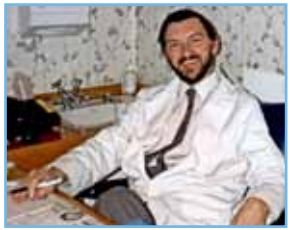
Dr John Airlie Hunter
Having established new premises in 1967, Drs Blundstone and Hunter continued to serve a growing population with traditional ‘cradle to grave’ family medicine. Home births were initially the norm, with GPs and midwives attending all births. Many of today’s local residents were delivered by the GP. Soon there followed a significant national change in policy and attitude. With modern assessment methods ‘low-risk’ pregnancies are carefully selected and still delivered at home by midwives today, but any pregnancy with potential complications is assigned to hospital. Most GPs had an insufficient volume of cases to maintain their expertise in obstetrics and the lack of high-tech facilities at home and fear of catastrophic outcomes and litigation changed practice and there were no GP deliveries in Dunchurch after1990.
Having attended the cradle, the GPs in the 1970s might, later that night, administer morphine and compassion during the terminal care of a patient at home. There was no on-call deputising service in those days. The two GPS would take turns to be ‘on-call’ for the whole practice on alternate nights (as well as working full time during the day). This did not change until the late 1990s. Thankfully patients of the time mostly reserved night calls for urgent problems.
This was perhaps one of the best eras for general practice. Rather than being regarded as a second-class medical service, General Practice was increasingly sought by young doctors. The development of the College of GPs which became the ‘Royal College of GPs’ in 1967 and subsequent development of the qualifications of MRCGP (membership) and compulsory formal GP training from 1981 (instead of taking up general practice with only a basic medical degree) all served to improve the recognition and standing of GPs. Yet at the time, there was little over-regulation, paperwork and fear of litigation among doctors and ‘Fundholding’ and ‘GP commissioning’ were still years away, leaving GPs to practice clinical medicine.The Seventies

Dr John Airlie Hunter
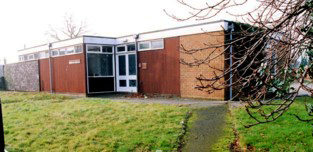
The surgery of the 70's
Drs Blundstone and Hunter continued to serve the growing population of Dunchurch and southern Rugby through the 1970s but as housing
increased, the practice list expanded and it became apparent that a third doctor
would be needed. Dunchurch doctors had hitherto been male. The first female British doctor, Elizabeth Garrett Anderson,
qualified in 1865 but men still dominated the profession for another century. Only 20% of medical students were women in
1950, but today women outnumber men as medical students and as GPs. The Eighties
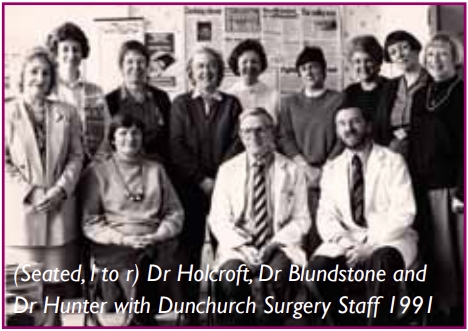
When Dr Penny Holcroft joined the practice in 1981 she became the first female GP in Dunchurch. An established local doctor with a particular interest in child health, Dr Holcroft also worked in the Community Child Health Clinic in Bilton. Paediatric Surveillance, as it came to be known, was assimilated into practices in the late 80s and continues to this day. Rather than reacting to illness, the process was intended to proactively seek out potential problems and address them early. Dr Holcroft later developed an interest and expertise in homeopathy which added a further dimension to Drs Blundstone and Hunter continued to serve the growing population of Dunchurch and southern Rugby through the 1970s but as housing increased, the practice list expanded and it became apparent that a third doctor would be needed. Dunchurch doctors had hitherto been male. The first female British doctor, Elizabeth Garrett Anderson, qualified in 1865 but men still dominated the profession for another century. Only 20% of medical students were women in 1950, but today women outnumber men as medical students and as GPs. When Dr Penny Holcroft joined the practice in 1981 she became the first female GP in Dunchurch. An established local doctor with a particular interest in child health, Dr Holcroft also worked in the Community Child Health Clinic in Bilton. Paediatric Surveillance, as it came to be known, was assimilated into practices in the late 80s and continues to this day. Rather than reacting to illness, the process was intended to proactively seek out potential problems and address them early. Dr Holcroft later developed an interest and expertise in homeopathy which added a further dimension to patient care and choice.
Another development in 1980s general practice was the introduction of computers. The potential to record (legible!) notes, produce accurate prescriptions quickly and to audit and analyse data was enormous, though the early pre-Windows systems were quite basic. Computer systems evolved rapidly and by 2004 all new GP records in Dunchurch were electronic.
The NHS and Community Care Act 1990 led to more changes, the introduction of an ‘internal-market’ in the NHS with a ‘Purchaser/Provider split’ and GPs cast as ‘Fundholders’ (purchasers) and hospitals as providers. This new financial market ideology would dominate health services for the next 30 years. In Dunchurch, the premises which had seemed so generous in 1967 were once again bulging at the seams and in the late 80s the doctors invested considerable time and effort to locate and obtain a plot and make plans for a new surgery. Would they succeed?
he prefabricated leasehold surgery behind the Dun Cow which had seemed so modern in 1967 had become dated by the eighties and new premises were needed. The doctors had to locate and finance a site and satisfy the Health Authority (to meet modern standards of provision), the patients (location and access) and of course local planners (and neighbours). Dr Blundstone, the senior partner who had established the old surgery, once again led the laborious and protracted process of developing the new one. After numerous false starts and dashed hopes, a site was finally secured at Dunsmore Heath keeping the practice at the heart of the village, only a stone’s throw from the previous premises. (The new surgery is in the left background of the demolition picture.) Although foundations had been laid and construction begun, the project was sadly not completed before Dr Blundstone’s retirement in 1991.
The Nineties
Surgery front view 1991
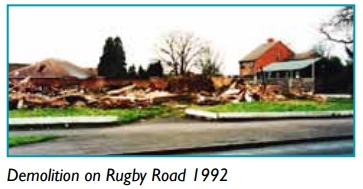
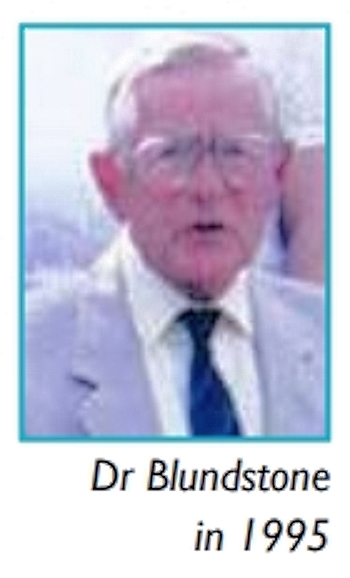
Like his predecessors, Dr Blundstone worked in Dunchurch for almost all of his career and his retirement dinner at Bilton Grange School, where he was Medical Officer, was a celebration of over 36 years as a respected family doctor and valued colleague. He was a quiet and reserved man, ready to listen and consider, unfailingly courteous and respectful and always impeccable in appearance. He delivered many residents of Dunchurch, knew almost everyone and was widely trusted for his clinical skill and integrity. He was admired by his colleagues as an effective and exemplary senior partner. As well as full-time medicine and alternate nights on-call throughout his career and his devotion to his family, Dr Blundstone also found time to be the master of a Masonic Lodge and an accomplished and popular local golfer. He died in 2004 but is fondly remembered and mentioned by patients to this day.

This, with one or two ‘extras’, was the expanded practice team of the 1990s on the occasion of Mrs Baynes’ retirement.
When Dr Blundstone retired in 1991, he was replaced by Dr Ian Czerniewski and as the village grew the partnership increased when Dr Elizabeth Roberts joined the practice six months later. Interviews were held at the old surgery, but with the promise of modern new premises which were under construction. To the interviewees, Dunchurch was welcoming and friendly with a distinctive village atmosphere and it was clear that the practice was well thought of locally. It was also clear that Drs Hunter and Holcroft genuinely cared about their patients offering traditional, personal ‘cradle to grave’ family medicine. Even then, many practices were losing this continuity of personal care. The welcoming ethos of the practice This, with one or two ‘extras’, was the expanded practice team of the 1990s on the occasion of Mrs Baynes’ retirement was fostered by the partners with the help of the Practice Manager, Mrs Margaret Baynes and her close knit team. Practice management had developed over the 1980s and managers have had an increasingly pivotal role in the running of the practice. The practice team also continued to expand with more practice nurses, district nurses, health visitors and midwives being integrated into the team. Ian had worked in Bristol and Liz in Lincolnshire and both brought new skills, fresh ideas and varied experiences from outside the area. They wanted to develop the practice at Dunchurch with computerisation and new services but were also keen to preserve the traditional elements of general practice. They were delighted to be appointed as partners at the surgery and looked forward to an exciting future.
More Doctors Pages
Friends of Dunchurch, a charity formed on 6th September 2018 by like-minded residents who love Dunchurch and its heritage and wish to protect and enhance its environment in order to make the village a better place to live in, work in and visit.
CONTACT US
Email: friendsofdunchurch@gmail.com
Village Green House, The Green, Dunchurch CV22 6NX